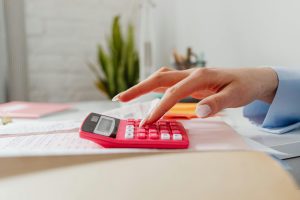Culturally Responsive Lesson Plans: Moving Beyond Token Diversity
In today’s diverse classrooms, it is essential for educators to go beyond token diversity and embrace culturally responsive teaching practices. This includes developing and implementing culturally responsive lesson plans that honor the cultural backgrounds and experiences of all students. As our world becomes increasingly interconnected, it is crucial for educators to equip students with the skills and understanding to thrive in diverse environments. This article will explore the importance of culturally responsive lesson plans and provide practical strategies for moving beyond token diversity in the classroom. 
Understanding Culturally Responsive Lesson Plans
Culturally responsive lesson plans are instructional plans that incorporate cultural elements and perspectives to support the learning of all students. These plans go beyond simply acknowledging the diversity of students in the classroom, but actively integrate diverse cultural perspectives and knowledge into the curriculum. This approach helps students see themselves reflected in the curriculum and promotes a sense of inclusivity and belonging in the classroom.
The Problem with Token Diversity
Token diversity refers to the idea of simply including a cultural element or activity in a lesson without deeper understanding or connection to the topic. This is often seen in lessons that focus on a specific cultural holiday or celebration without exploring the historical, social, and cultural significance of the event. While it may seem like a step towards recognizing diversity, token diversity can actually have a negative impact on students.
When students see their cultures or identities reduced to a one-time activity, it can reinforce the idea that their experiences and backgrounds are not valued or important. It can also perpetuate stereotypes and biases, as the activity may not accurately reflect the complexity and diversity within a cultural group. This type of superficial approach to diversity also fails to provide students with the critical thinking and cultural competence skills needed to navigate a diverse world.
Moving Beyond Token Diversity
So how can educators move beyond token diversity and create culturally responsive lesson plans that truly honor and engage all students? Below are some strategies to consider:
Start with self-reflection
Before developing a lesson, it is essential for educators to reflect on their own cultural biases and beliefs. This self-reflection can help to identify any potential blind spots or potential stereotypes that may be embedded in lesson plans. Educators can also ask themselves: Whose perspectives and experiences are represented in this lesson? Whose voices are missing?
Include diverse perspectives
A key aspect of culturally responsive lesson plans is the inclusion of diverse perspectives. This can involve inviting guest speakers from different cultural backgrounds, incorporating books and materials from diverse authors, and providing opportunities for students to share their own cultural experiences. By including a variety of perspectives, students can see the world from different viewpoints, developing empathy and understanding for others.
Connect to real-life experiences
Culturally responsive lesson plans should also strive to make connections to students’ real-life experiences and backgrounds. This can be done by incorporating culturally relevant topics and issues into the curriculum. For example, a science lesson could explore the traditional ecological knowledge of Indigenous communities, while a social studies lesson could examine the impact of immigration on a diverse society.
Promote critical thinking
Culturally responsive lesson plans should challenge students to think critically about their own cultural beliefs and those of others. Educators can do this by including activities that require students to analyze and critically reflect on different cultural perspectives. This can help students develop a deeper understanding of themselves and others, as well as cultivate respect for diverse cultures.
With these strategies in mind, educators can create lesson plans that go beyond token diversity and promote a truly inclusive and culturally responsive learning environment for all students. By acknowledging and embracing diversity in the classroom, we can prepare students to thrive in a diverse and interconnected world.











